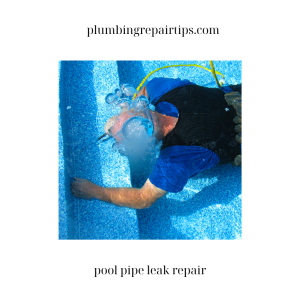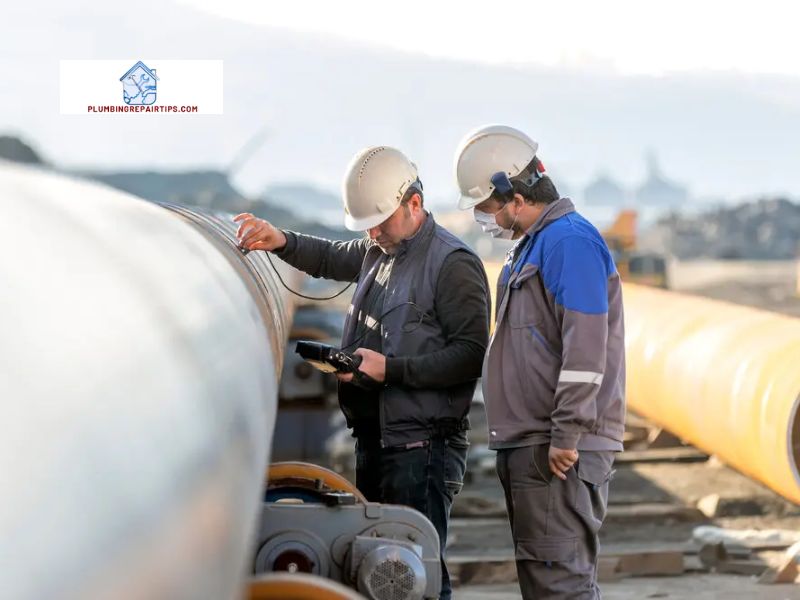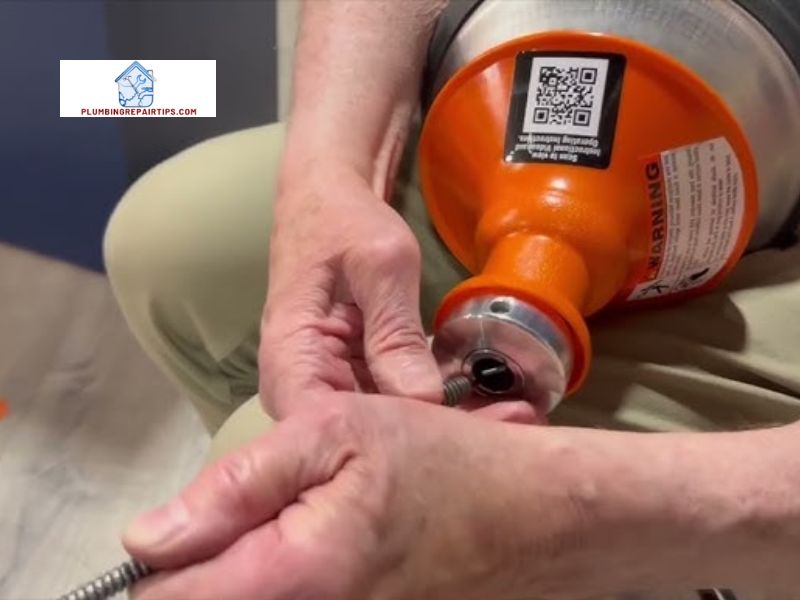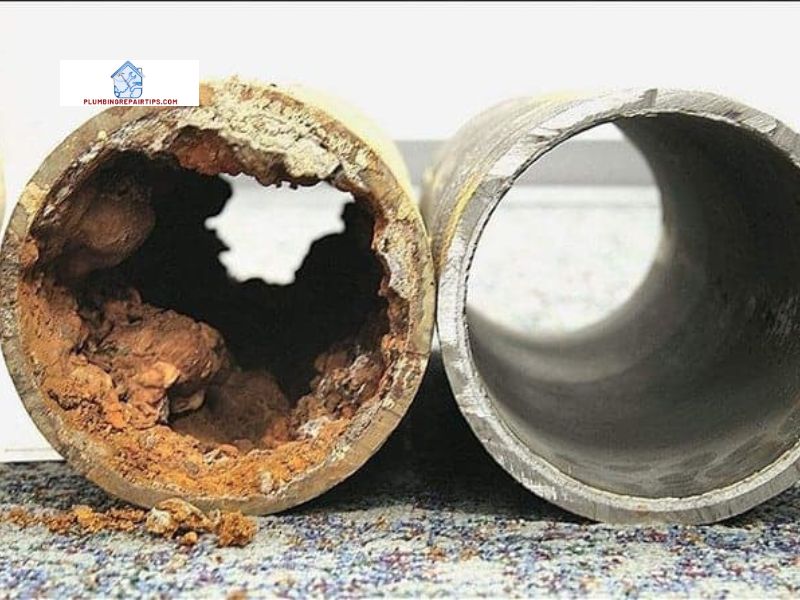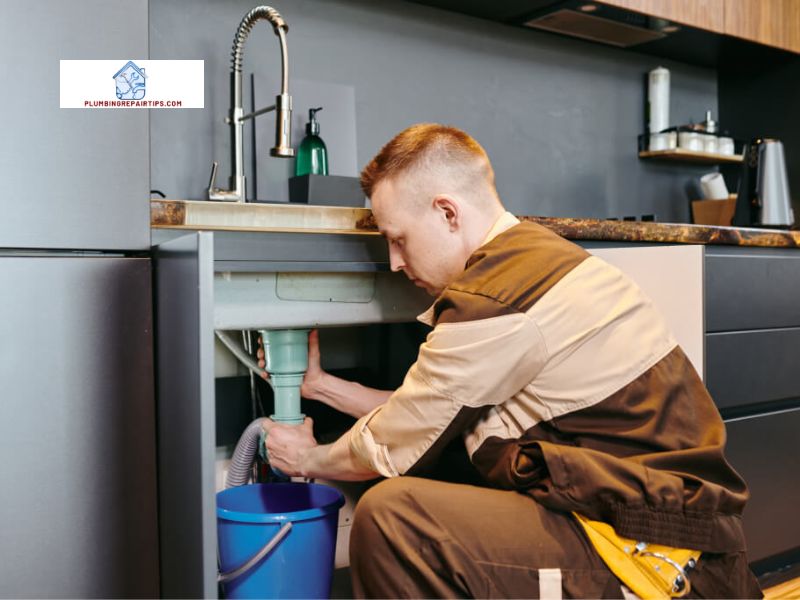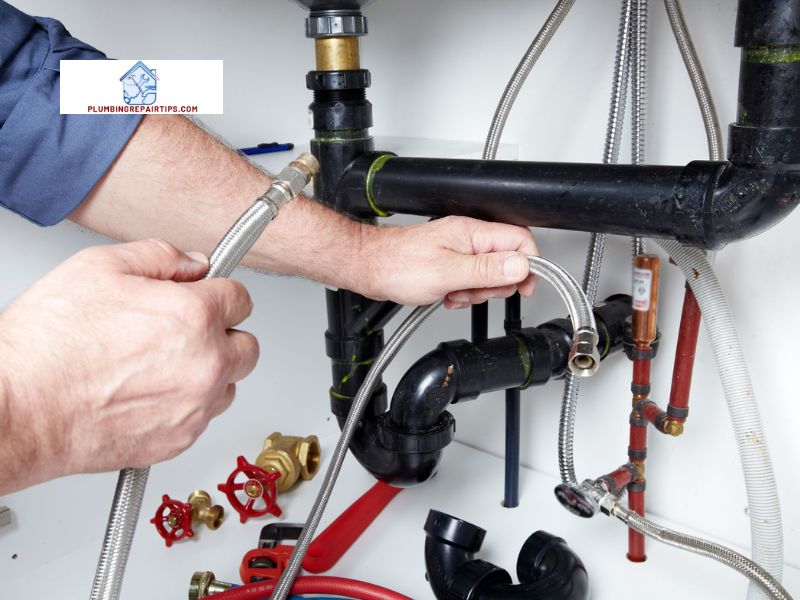Are you finding a Concrete pipe leak repair service? Concrete pipe leaks can spell disaster if left unattended. The integrity of your infrastructure, whether it’s a residential, commercial, or industrial building, depends on addressing concrete pipe leaks promptly. In this article, plumbingrepairtips.com will explore the importance of repairing concrete pipe leaks promptly, the common causes of such leaks, and the potential consequences if they are left untreated.
Importance of addressing concrete pipe leaks promptly
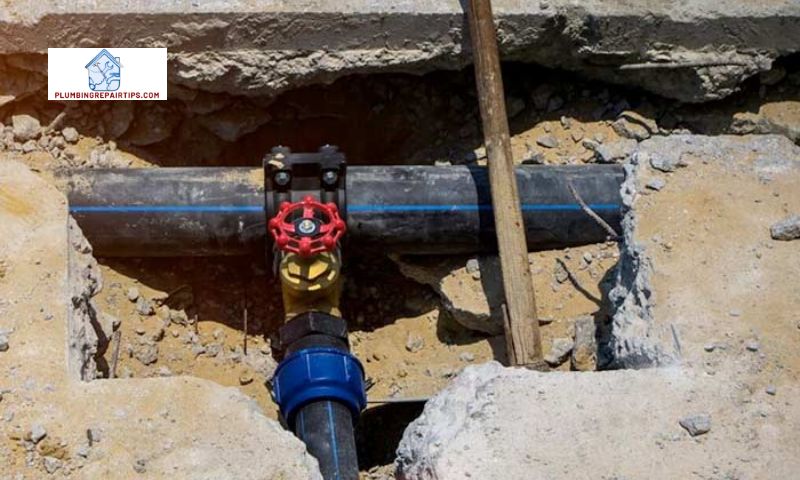
When it comes to concrete pipe leaks, time is of the essence. The longer a leak goes unnoticed or unaddressed, the greater the damage it can cause. Not only can leaks compromise the structural integrity of your building, but they can also lead to a host of other problems. Moisture seeping through the concrete can damage adjacent materials, including insulation, electrical systems, and even the foundation.
Common causes of concrete pipe leaks
Understanding the common causes of concrete pipe leaks can help you identify potential issues and take preventative measures. Some common causes include:
- Age and wear: Over time, concrete pipes can deteriorate due to aging and wear, leading to cracks and leaks.
- Corrosion: Harsh environmental conditions, such as exposure to chemicals or high levels of moisture, can cause corrosion, weakening the pipes and increasing the risk of leaks.
- Poor installation: Improper installation techniques or the use of subpar materials can result in faulty connections or weak points that are prone to leaks.
- Ground movement: Shifts in the ground, whether due to natural causes like earthquakes or man-made activities like construction, can put stress on concrete pipes, leading to cracks and leaks.
- Tree root intrusion: Tree roots seeking water can penetrate concrete pipes, causing them to crack and leak.
Potential consequences of untreated leaks
Ignoring concrete pipe leaks can have severe consequences, both financially and structurally. Some potential consequences include:
- Structural damage: Leaking water can weaken the surrounding structure, compromising its stability and posing safety risks.
- Mold and mildew growth: Moisture from leaks creates an ideal environment for mold and mildew to thrive, leading to health issues for occupants and further damage to building materials.
- Increased water bills: Undetected leaks can result in significant water wastage, leading to inflated water bills.
- Property damage: Leaking water can damage walls, ceilings, flooring, and personal belongings, resulting in costly repairs or replacements.
In the following sections, we will delve deeper into concrete pipe leak detection, severity assessment, repair options, and the importance of seeking professional services for effective leak repairs. Stay tuned to learn how to tackle concrete pipe leaks and safeguard your infrastructure from potential disasters.
Understanding Concrete Pipe Leak Detection
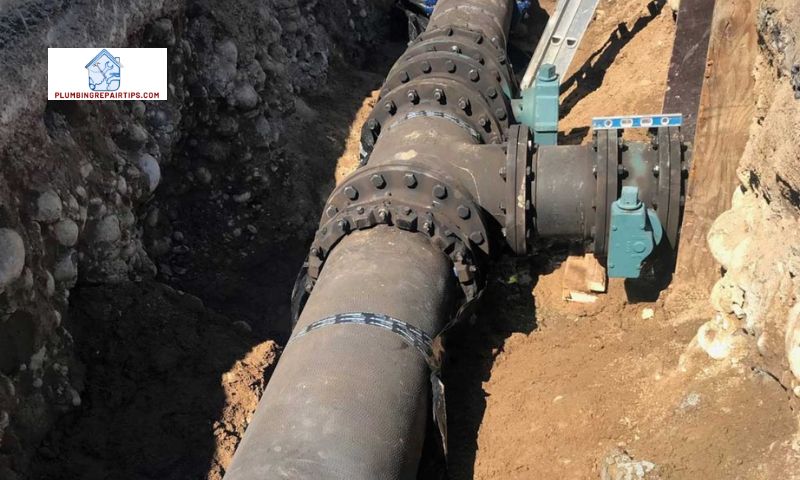
Signs and symptoms of concrete pipe leaks
Detecting concrete pipe leaks early on is crucial to prevent further damage. Recognizing the signs and symptoms can help you identify potential leaks and take prompt action. Keep an eye out for the following indicators:
- Water stains: Notice any unexplained water stains on walls, ceilings, or floors. These could be a sign of a hidden leak in your concrete pipes.
- Damp or musty odors: If you detect a persistent damp or musty smell, it may indicate water accumulation from a leak.
- Decreased water pressure: Have you noticed a sudden decrease in water pressure? It could be due to a leak, causing water to escape before reaching the intended destination.
- Pools of water: Standing water in unusual areas, such as your basement or yard, may indicate a concrete pipe leak.
Importance of early detection
Early detection of concrete pipe leaks is essential to minimize the potential damage and associated costs. By catching leaks in their early stages, you can prevent structural deterioration, mold growth, and further water damage. It also allows you to address the issue before it escalates into a more significant problem that requires costly repairs.
Techniques and tools for concrete pipe leak detection
Various techniques and tools are available to aid in concrete pipe leak detection. Here are a few commonly used methods:
- Visual inspection: A thorough visual examination of the pipes and surrounding areas can help identify visible signs of leaks, such as cracks or water stains.
- Acoustic leak detection: This method utilizes specialized equipment to detect the sound of water escaping from concrete pipes, helping pinpoint the location of the leak.
- Pressure testing: By increasing the pressure within the pipes and monitoring for pressure drops, professionals can identify possible leaks.
- Infrared thermography: This non-invasive technique uses thermal imaging to detect temperature variations caused by water leakage, assisting in identifying hidden leaks.
Remember, early detection is key to minimizing damage. If you suspect a concrete pipe leak, don’t delay in seeking professional assistance or employing appropriate detection techniques to locate and address the issue promptly. In the upcoming sections, we will explore how to assess the severity of concrete pipe leaks and the available repair options to restore the integrity of your pipes.
Assessing the Severity of Concrete Pipe Leaks
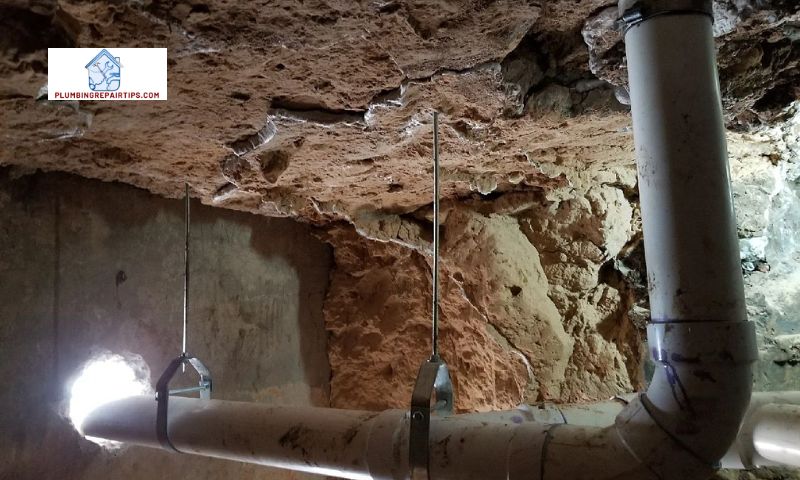
Concrete pipe leaks can vary in severity, and it is crucial to assess the extent of the damage to determine the appropriate course of action. By understanding how to differentiate between minor and major leaks, utilizing methods for measuring leak severity, and recognizing the factors that influence the severity of concrete pipe leaks, you can effectively address the issue.
Differentiating between minor and major leaks
When it comes to concrete pipe leaks, not all leaks are created equal. Differentiating between minor and major leaks is essential in determining the urgency and extent of the repair needed. Minor leaks are typically characterized by slow, occasional drips or small amounts of water seepage. These leaks may be manageable in the short term but should not be ignored, as they can worsen over time. On the other hand, major leaks involve a significant flow of water, causing noticeable damage and posing immediate risks to the structure’s integrity.
Methods for measuring leak severity
To accurately assess the severity of concrete pipe leaks, several methods can be employed. These methods help gauge the extent and impact of the leak, aiding in decision-making for repairs. Some common methods include:
- Visual inspection: A visual assessment can reveal visible signs of leaks such as water stains, wet spots, or discoloration on the pipes or surrounding areas.
- Pressure testing: By subjecting the pipe system to controlled pressure, variations in pressure levels can indicate the presence and severity of leaks.
- Flow monitoring: Monitoring the flow rate of water through the pipe system can help identify irregularities and indicate the severity of leaks.
- Non-destructive testing: Techniques such as acoustic, thermal, or electromagnetic testing can be used to detect and measure leaks without damaging the pipe system.
Factors influencing the severity of concrete pipe leaks
Several factors can influence the severity of concrete pipe leaks. These factors should be considered during the assessment process to develop an accurate understanding of the situation. Some key factors include:
- Location of the leak: The proximity of the leak to critical areas, such as load-bearing structures or electrical systems, can significantly impact the severity.
- Water pressure: Higher water pressure can exacerbate leaks, leading to more severe damage.
- Pipe material and condition: The material and condition of the pipe can affect how the leak manifests and spreads.
- Environmental factors: External conditions, such as ground movement or temperature fluctuations, can influence the severity and progression of the leak.
By accurately assessing the severity of concrete pipe leaks, you can make informed decisions on the appropriate repair methods and prioritize repairs based on the level of urgency. In the following sections, we will explore various repair options, including DIY solutions and professional services, to help you address concrete pipe leaks effectively.
Concrete Pipe Leak Repair Options
Concrete pipe leaks require immediate attention to prevent further damage and maintain the structural integrity of your building. In this section, we will explore various repair options available for addressing concrete pipe leaks.
Overview of Repair Techniques
When it comes to repairing concrete pipe leaks, several techniques can be employed based on the severity of the leak and the specific requirements of the situation. Here are some commonly used repair techniques:
- Sealants: Sealants are often used for minor leaks and cracks. They can be applied directly to the affected area to create a watertight seal and prevent further leakage. Sealants are easy to use and cost-effective for small-scale repairs.
- Epoxy Injection: Epoxy injection is a more advanced repair method suitable for larger cracks and leaks. It involves injecting a high-strength epoxy resin into the damaged area, which then hardens and seals the leak. Epoxy injection provides a durable and long-lasting solution.
- Pipe Replacement: In cases where the damage is extensive or the pipe is beyond repair, pipe replacement may be necessary. This involves removing the damaged section of the pipe and installing a new one. Pipe replacement ensures a complete and permanent solution to the leak problem.
Traditional Repair Methods for Concrete Pipe Leaks
Traditional repair methods have been used for years to address concrete pipe leaks. These methods include:
- Patch Repairs: Patch repairs involve applying a specialized concrete mixture or mortar to the damaged area to seal the leak. This method is suitable for small cracks and leaks and provides a temporary f
- Joint Repair: Joint repair focuses on fixing faulty connections or joints in concrete pipes. It typically involves cleaning the joint, applying sealants or specialized compounds, and ensuring a secure and watertight connection.
Advanced Repair Solutions for Concrete Pipe Leaks
With advancements in technology and materials, more advanced repair solutions have emerged to tackle concrete pipe leaks effectively. These solutions include:
- Cured-in-Place Pipe (CIPP) lining: CIPP lining involves inserting a flexible liner into the damaged pipe and curing it in place with heat or UV light. This creates a new, seamless pipe within the existing one, eliminating leaks and improving the overall structural integrity.
- Pipe Bursting: Pipe bursting is a trenchless method that involves breaking the damaged pipe while simultaneously pulling in a new pipe to replace it. This method is efficient, minimizes disruption, and provides a long-lasting solution to concrete pipe leaks.
In the next section, we will explore DIY concrete pipe leak repair steps for minor leaks that can be tackled by homeowners. Stay tuned to discover how you can take control of minor concrete pipe leaks and save on repair costs.
DIY Concrete Pipe Leak Repair: Taking Matters into Your Own Hands
Step-by-step guide to repairing minor concrete pipe leaks
Repairing minor concrete pipe leaks can be a manageable task with the right guidance. Follow these steps to tackle the issue yourself:
- Identify the leak: Carefully inspect the concrete pipe to locate the source of the leak. Look for visible cracks, dampness, or water stains.
- Prepare the area: Before starting the repair, clean the surrounding area to remove any debris or loose materials that may hinder the repair process.
- Apply a concrete patch: Use a high-quality concrete patching material to seal the leak. Follow the manufacturer’s instructions for mixing the patching material and apply it directly to the crack or leak using a trowel or putty knife. Ensure the patch covers the entire affected area and is smooth.
- Allow time for curing: Give the concrete patch ample time to cure. Follow the recommended curing time provided by the manufacturer. During this period, ensure the repaired area is protected from water or other potential damages.
Essential tools and materials needed for DIY repairs
To successfully repair minor concrete pipe leaks, you’ll need a few essential tools and materials:
- Protective gear: Wear safety goggles, gloves, and a mask to protect yourself from potential hazards during the repair process.
- Concrete patching material: Choose a high-quality concrete patching material that is suitable for the type and size of the leak you are repairing.
- Trowel or putty knife: These tools are essential for applying the concrete patching material smoothly and evenly.
- Wire brush: Use a wire brush to clean the area around the leak, removing any loose debris or old patching material.
- Waterproof sealant: Consider applying a waterproof sealant over the repaired area for added protection against future leaks.
Safety precautions to consider during DIY repairs
While DIY concrete pipe leak repairs can be fulfilling, it’s crucial to prioritize safety. Keep the following safety precautions in mind:
- Turn off the water supply: Before starting any repair work, locate and shut off the water supply to the affected pipe to minimize the water flow.
- Work in a well-ventilated area: Ensure there is adequate ventilation to prevent the buildup of fumes from the patching material.
- Follow manufacturer’s instructions: Read and follow the instructions provided by the manufacturer for the concrete patching material and any other products used during the repair process.
- Take breaks and stay hydrated: Repairing concrete pipe leaks can be physically demanding. Take regular breaks and stay hydrated to avoid exhaustion or dehydration.
By following these step-by-step instructions, gathering the necessary tools and materials, and prioritizing safety, you can successfully repair minor concrete pipe leaks on your own. However, for more significant or complex leaks, it is recommended to seek professional assistance to ensure thorough and long-lasting repairs.
Conclusion: Protect Your Infrastructure with Prompt Concrete Pipe Leak Repair
In conclusion, addressing concrete pipe leaks promptly is crucial for maintaining the structural integrity of your building and preventing costly damage. By understanding the importance of timely repairs, the common causes of concrete pipe leaks, and the potential consequences of untreated leaks, you can take proactive measures to safeguard your infrastructure.
By addressing leaks promptly, you can prevent further damage to adjacent materials, such as insulation and electrical systems, which can save you from costly repairs down the line. Moreover, taking quick action can help mitigate the risks of structural damage, mold and mildew growth, increased water bills, and property damage.
Remember, concrete pipe leaks can arise from various factors, including age and wear, corrosion, poor installation, ground movement, and tree root intrusion. By being aware of these potential causes, you can be proactive in identifying and addressing any leaks before they escalate into significant problems.
Whether you choose to tackle minor leaks with DIY methods or opt for professional concrete pipe leak repair services, it is essential to act swiftly. DIY repairs can be effective for minor leaks, but always prioritize your safety and consider hiring professionals if you are uncertain or if the leaks are severe.
Don’t let concrete pipe leaks undermine the stability and value of your infrastructure. Take control, detect leaks early, and address them promptly to ensure the longevity and safety of your building. Remember, prevention is key, and investing in timely repairs will save you from potential headaches and financial burdens in the long run.
So, what are you waiting for? Take the necessary steps to repair concrete pipe leaks and protect your investment today. Your infrastructure will thank you, and you can have peace of mind knowing that you have safeguarded your property against potential disasters.
